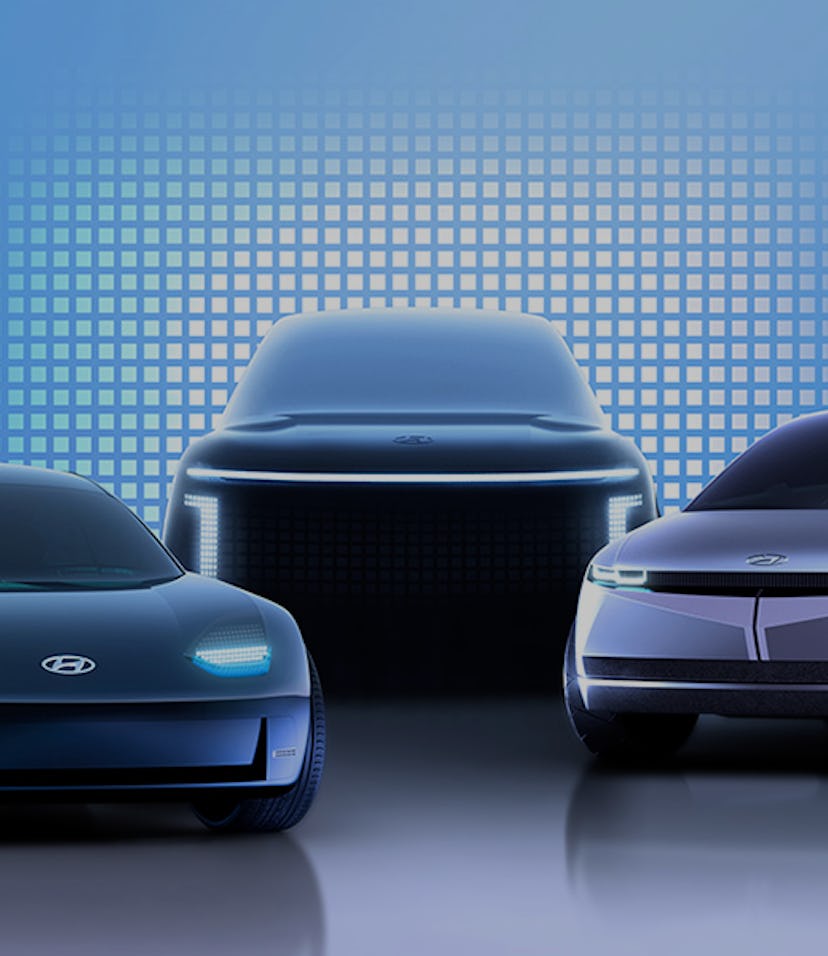Design
Hyundai Ioniq is now its own EV brand and Tesla should be worried
Three models of Ioniq are now confirmed and set to begin rolling off production lines next year. The really daring part? None of them look alike.

Korean carmaker Hyundai has announced it's launching a dedicated sub-brand called Ioniq for its electric vehicles. Ioniq previously referred to a single Hyundai model introduced in 2016 that was available as a hybrid or electric car. We've already seen two more modern Ioniq-branded vehicles, first teased as concepts, then confirmed as production models. And now the company is showing off a third, while also making the decision to let the Ioniq brand stand separately from its core brand which continues to make competitively priced, gas-burning compacts, sedans, and SUVs.
The Ioniq EVs are all being built on Hyundai's modular E-GMP platform that allows for fast-charing and variable battery cell counts, depending on the intended use case of the vehicle. The first of the three models will arrive in 2021. Called the Ioniq 5, it's a mid-sized CUV based on the concept 45 that was the first Ioniq to be shown off in late 2019, and the first to include the pixelated-cityscape-style head and tail light designs that'll be one of the visual mainstays of the Ioniq range.
Next up, there's the Ioniq 6 sedan, based on the pebble-like Prophecy that's slated for a 2022 release and, finally, there's the Ioniq 7, a large SUV scheduled for 2024. The really unique part? Though there's shared design language, all three vehicles look truly distinctive to a degree that's unprecedented in the auto sector.
Hyundai's ambitions — Hyundai announced its plans for the Ioniq marque by taking over the London Eye — the English capital city's giant Ferris wheel — with lighting and illuminated balloons that made it represent a gigantic Q. It's also said it plans to sell 1 million electrified vehicles and grab 10 percent of the EV market by 2025. BMW, Ford, and Mercedes-Benz have similar ambitions, as does every other automaker which has to watch Tesla race into pole position as the world's most valuable carmaker.
Going it alone — Spinning off its EV arm isn't exactly a controversial move for Hyundai to make. GM has been weighing up the potential benefits of turning its electrification efforts with the likes of Cadillac and Hummer into sub-brands, at least in part because of the enormous fundraising companies like Nikola and Fisker (who don't even have actual production models yet) have managed to secure. That sort of enthusiasm — and investment — hasn't been as forthcoming for legacy brands trying to pivot from combustion vehicles to battery-powered ones. Volvo, meanwhile, has bitten the bullet and created a sub-brand for its luxury electric cars called Polestar.
For now, Tesla needn't worry too much. It's got until next year before the first of what's set to be a glut of new EVs arrive on the market. By then, it'll have two new factories operational (one in Berlin, Germany, the other in Austin, Texas), a new battery, and a stronger foothold in China. You can be certain it's paying close attention to its rivals' though. Because just as it's gone from a minnow to a whale, it's not guaranteed it'll stay that way. Building cars and selling them for a profit is hard. If it wasn't, everyone would be doing it.